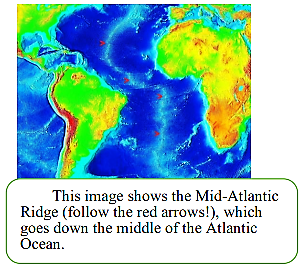1 . Can Animals Predict Earthquakes?
The belief that animals can predict earthquakes has been around for centuries. In 373 B.C., historians recorded that some animals deserted the Greek City of Helice in groups just days before a quake hit the place.
The United States Geological Survey states that there has been no concrete evidence for the fact that animal behavior has a relationship with the occurrence of an earthquake.
| A.Exactly what animals have sensed can’t be fully understood. |
| B.The connection between them has never been scientifically made. |
| C.Other researchers around the world, however, have not given up on the idea. |
| D.It is necessary to know if the animal behavior is an advanced warning signal. |
| E.Records of similar animal foretelling of earthquakes have surfaced ever since. |
| F.Wild creatures also show various kinds of abnormal reactions before earthquakes. |
| G.Perhaps this sense that some animals appear to have can protect us from natural disasters. |
Then what is causing the increase in the global average surface temperature? Climate scientists often mention a key climate process
Earth is home to millions of different species. Some can be very small, like bacteria and viruses, which are so small that we cannot see
A new study reveals more answers about why Earth’s second largest ocean is expanding four centimetres.
That’s around the height of a golf tee. The width of a cracker. It’s also the amount that the Atlantic Ocean is expanding every year.
Now when you’re talking about an ocean that is 4,830 kilometres (3,000 miles) wide at its largest point, 4 centimetres (1.6 inches) is not much. But it is happening. So naturally, scientists want to know why.

Thanks to a new study, researchers think that they have the answer why. You could even call it a ‘hot take’. As in hot magma, or molten rock, deep under the ocean floor!
The study suggests that the expansion is being caused by magma(岩浆) bubbling up from under an underwater ‘mountain range’ called the Mid-Atlantic Ridge. Let’s start with what that ridge is.
Basically, the Mid-Atlantic Ridge is the seam between some very large tectonic plates. The ridge is also known as a plate boundary. As we’ve discussed before here, tectonic plates are essentially the platforms that our continents rest on. They are large pieces of the crust that are always moving in slow motion.
This movement is what causes earthquakes, for example. And the areas where the plates meet are where we tend to find things like mountains and volcanos, as well.
In this case, as the magma bubbles up from the mantle(地幔) below the crust, it is pushing the edges of both plates out of the way. As a result, the ocean is slowly getting wider.
This is a new finding. Before the study, scientists thought that the plates were being pulled apart—they were being dragged away from the ridge by forces occurring on either side of the ocean, not from in the middle.
Scientists still believe that this ‘pulling’ motion is happening. It is just that now, they feel that the bubbling magma is an important force as well. There is push and pull.
The scientists behind this study have been quick to point out that their research is only looking at a small cross-section of the ridge. It’s like a slice across it. What is happening right along this slice, may not be happening the same way up and down the entire ridge. But it is still really useful information—and how they got it is pretty cool.
Back in 2016, a research ship traveled to a very quiet spot directly over the ridge. Over five weeks, the crew dropped 39 seismometers on to the ocean floor. These devices allow them to ‘listen’ to the activity of the tectonic plates and what was beneath it. It’s like what a stethoscope does with your heartbeat, but for the planet. A year later, they retrieved the devices and looked at the data.
Then it was back to the lab to try and piece together what they learned. In the end, they have added to our understanding of how and why the Earth’s surface constantly moves. Even if it is only by about a little bit each year!
1. What is causing the expansion of Earth’s second largest ocean?2. What does the underlined phrase “This movement” refer to?
3. Please decide which part of the following statement is false, then underline it and explain why.
Scientists find that it is the magma below the crust that is pushing the edges of both plates out of the way to cause the ocean to slowly get wider, but not the forces occurring on either side of the ocean pulling the plates apart.
4. What do you think of the process of how the finding was got? (about 40 words)



